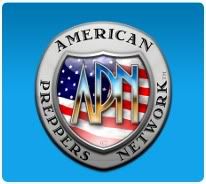
 to itsadisaster at American Preppers Network
to itsadisaster at American Preppers NetworkDealing with extreme heat
Now that AZ is hitting triple-digits in many places (with many more months of it to go) ... here are some basic tips on dealing with extreme heat. A lot of this is common sense stuff but posting here as fyi. Please add your tips & tricks too! Stay safe & cool out there, j (& B)
What is Extreme Heat? Temperatures that hover 10 degrees or more above the average high temperature for that area and last for several weeks are considered “extreme heat†or a heat wave. Humid and muggy conditions can make these high temperatures even more unbearable. Really dry and hot conditions can cause dust storms and low visibility. Droughts occur when a long period passes without enough rainfall. A heat wave combined with a drought is a very dangerous situation!
Doing too much on a hot day, spending too much time in the sun or staying too long in an overheated place can cause heat-related illnesses. Know the symptoms of heat illnesses and be ready to give first aid treatment.
BEFORE EXTREME HEAT HITS:
Keep it cool - Tips to keep hot air out and cool air inside include...
• Close any floor heat vents nearby.
• Seal gaps around window units with foam or duct tape.
• Use a circulating or box fan to spread the cool air around.
• Use aluminum foil covered cardboard in windows to reflect heat back outside.
• Use weather-stripping on doors and windowsills.
• Keep storm windows up all year to help keep cool in.
DURING EXTREME HEAT:
Protect windows - If you hang shades, drapes, sheets, or awnings on windows you can reduce heat from entering home by as much as 80%.
Conserve power - During heat waves there are usually power shortages since everyone is trying to cool off, so stay indoors as much as possible.
Conserve water - Tips to lower water usage, esp. during drought conditions
• Check plumbing for leaks.
• Replace toilet and shower head with “low flow†versions.
• Don’t leave water running while shaving, brushing teeth, washing dishes, cleaning fruit or veggies, etc.
• If washing dishes or clothes, make sure it’s a full load.
• Take short showers rather than filling up a bathtub.
• Limit watering lawn or washing cars.
No A/C..? - If you have no air conditioning, try to stay on the lowest floor out of the sunshine and use electric fans to help keep yourself cool.
Cars - Never leave children or pets in vehicles on warm or hot days!!
Eat light - Light meals are best, especially fresh fruits and veggies.
Drink WATER - Increase your daily intake of water, esp. in dry climates (deserts and high elevations) -- you don’t realize how dehydrated you get.
Limit booze - Even though beer and alcoholic beverages may be refreshing on a hot day, they actually cause your body to dehydrate more.
What to wear - Light-colored (to reflect heat) loose-fitting clothes are best... and cover as much skin as possible. Dark colors absorb the sun’s heat. Also, wear a wide-brimmed hat to protect face and neck.
Use sunscreen - Apply lotion or cream at least 20 minutes before going outside so skin can absorb and protect, esp. face and neck (SPF 30 with a 3 or 4 star UVA protection is best). You usually burn within the first 10 minutes outside, so take care of your skin… especially children! A sunburn slows the body’s ability to cool itself and can be extremely dangerous.
Working outdoors - If you have to do yard work or other outdoor work, try to do it in the early morning hours to limit exposure in the sun. The most powerful sun is between 10 a.m. and 3 p.m. (when you burn the quickest) so limit outdoor activity during the heat of the day, if possible.
Ozone alerts - These can cause serious danger to people with breathing and respiratory problems (especially children and the elderly) so limit your time outdoors when alerts are announced on the radio, newspapers or TV.
• ozone - a colorless gas that is in the air we breathe and is a major element of urban smog.
• ground-level ozone - an air pollutant that can lower resistance to colds, cause problems for people with heart and lung disease, and cause coughing or throat irritation
• ozone levels - (also called Air Quality Index) between 0-50 are fine, but anything above 100 is extremely dangerous!
Heat Index - Visit NOAA’s heat safety page at http://www.weather.gov/om/heat
Also learn about and watch for signs of HEAT EXHAUSTION and/or HEAT STROKE (ck out First aid thread here )
Above extracted from our IT'S A DISASTER! book - proceeds benefit APN.
 staying cool-how do you cool down when the power is off?
staying cool-how do you cool down when the power is off?